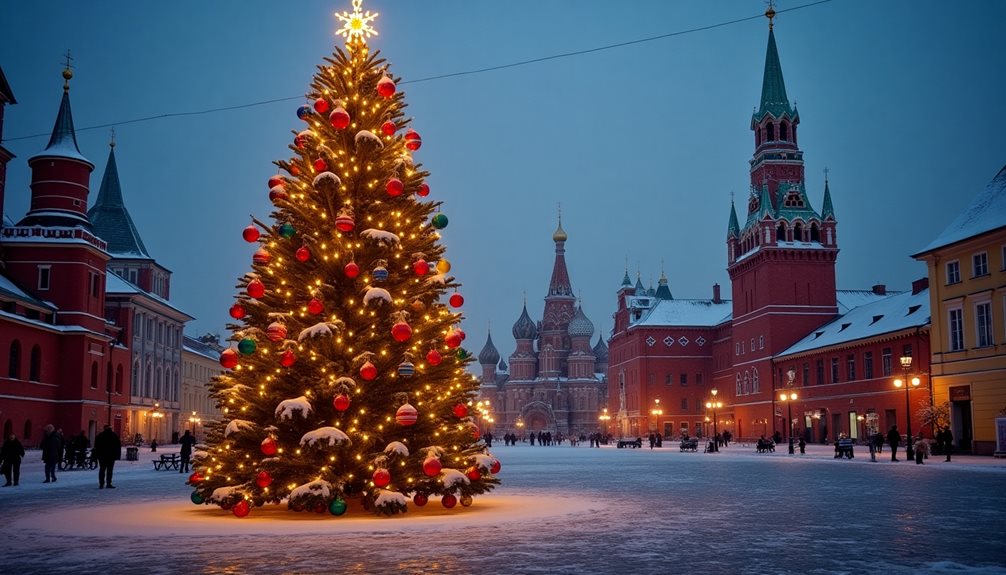When you consider Russian folklore, Baba Yaga and the Fire Bird stand out as two of the most intriguing and complex figures, embodying rich themes of duality and transformation. Baba Yaga, the witch in her hut on chicken legs, challenges heroes with her enigmatic nature, blending fear and wisdom. On the other hand, the Fire Bird’s radiant beauty and elusive nature ignite quests for dreams and self-discovery. These characters aren’t just folklore staples; they offer profound insights into cultural values and human nature. But what deeper meanings do they truly hold, and how have they shaped modern narratives?
Origins and Historical Context
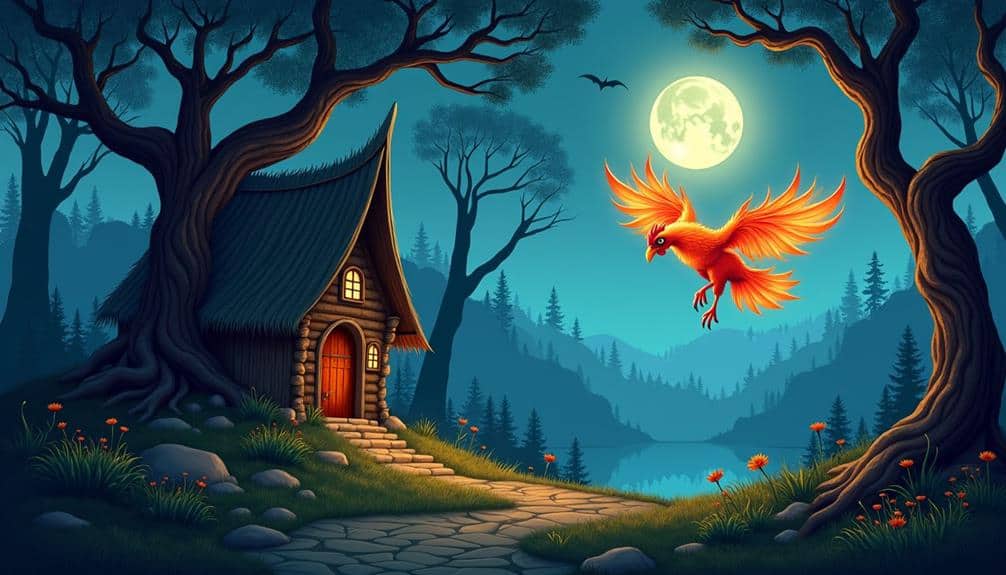
The origins and historical context of Baba Yaga and the Fire Bird in Russian folklore are deeply rooted in the cultural and social evolution of Eastern Slavic societies. As you delve into Slavic mythology, you’ll notice these characters are more than mere fantasy; they’re reflections of the collective consciousness and societal norms of the time.
In Slavic folklore traditions, Baba Yaga emerges as a multifaceted figure, often embodying the duality of fear and wisdom. Her stories reveal societal attitudes towards the unknown and the supernatural.
The Fire Bird, on the other hand, symbolizes light, hope, and prosperity, frequently appearing in tales where heroes embark on quests, reflecting the human desire for transcendence and achievement.
Understanding these origins requires you to consider the historical backdrop of the Eastern Slavs. These myths developed in a pre-Christian era, influenced by pagan beliefs and rituals.
As societies transitioned through various historical phases, including Christianization, these folklore traditions adapted, intertwining old beliefs with new religious contexts.
Baba Yaga: The Enigmatic Witch
Baba Yaga, the enigmatic witch of Russian folklore, stands as a complex symbol of both terror and wisdom. Her character oscillates between the roles of a malevolent crone and a sagacious guide, embodying the duality of nature and human experience.
You’ll find that Baba Yaga’s home, a hut perched on chicken legs, symbolizes her transient nature and connection to the liminal spaces between the physical and spiritual worlds. This unusual dwelling enhances the mystique surrounding her, reinforcing her status as an unpredictable and formidable figure.
Baba Yaga’s rituals are integral to understanding her role within the folklore. These rituals often involve tests of character and courage, where protagonists must navigate her demands to achieve their quests.
Through these trials, she serves as a gatekeeper of wisdom and transformation. Her actions, while seemingly capricious, adhere to an internal logic rooted in ancient customs and beliefs.
You’ll notice that these rituals frequently encapsulate themes of life, death, and rebirth, reflecting the cyclical nature of existence.
Symbolism of Baba Yaga
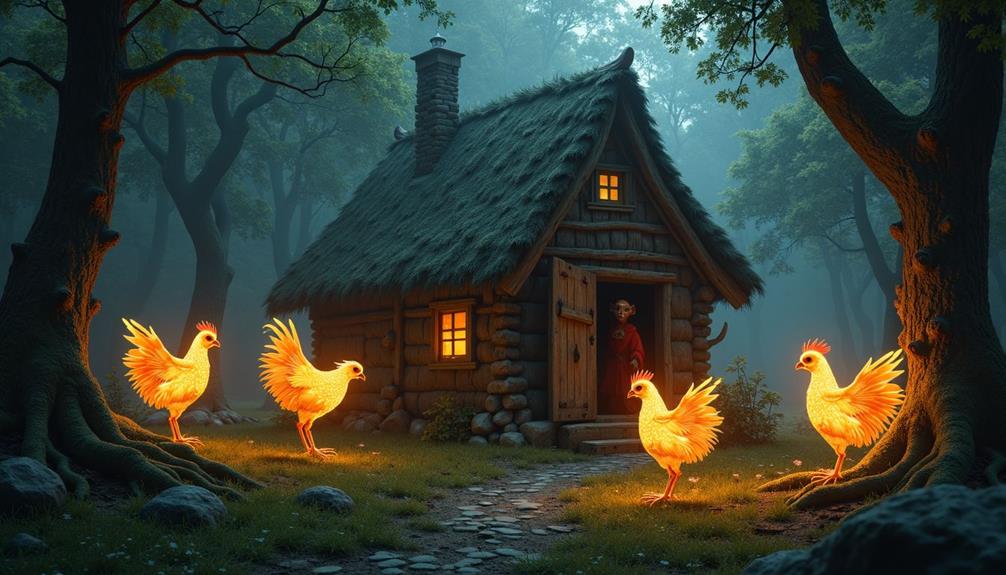
In examining the symbolism of Baba Yaga, one must delve into the rich tapestry of her multifaceted nature. Baba Yaga’s role in Russian folklore isn’t just that of a witch; she’s a guardian of wisdom and a crucial figure embodying the duality of life and death.
On one hand, she’s a fearsome antagonist, living in a hut that stands on chicken legs, symbolizing instability and unpredictability. Her menacing presence represents the unknown and the chaotic forces of nature.
Yet, Baba Yaga’s duality is what makes her character profoundly symbolic. She’s not merely a force of evil but also a wise old woman who can offer guidance and insight.
Many tales depict her as a gatekeeper to the otherworld, where she tests the hero before bestowing magical aid or knowledge. This dual role underscores her as a figure of transformation, embodying both the nurturing and destructive aspects of nature.
The Fire Bird: A Mythical Creature
While Baba Yaga embodies the complex nature of wisdom and transformation, another iconic figure in Russian folklore, the Fire Bird, offers a different kind of mystical allure. The Fire Bird’s mythical origins are deeply rooted in Slavic mythology, representing a radiant creature of magnificent beauty and enchanted feathers.
These feathers aren’t just visually captivating; they possess magical powers that often drive the narratives in which the Fire Bird appears.
In analyzing the cultural representations of the Fire Bird, you’ll find that it symbolizes both peril and promise. Depending on the tale, the Fire Bird can be a harbinger of great fortune or a source of immense challenge. Its appearance often prompts quests undertaken by heroes, adding layers of complexity to the folklore.
Folklore variations of the Fire Bird span across different regions, each adding unique elements to its story. From the shimmering plumage that illuminates dark forests to the transformative powers imbued in its feathers, the Fire Bird’s role in Russian tales is multifaceted.
Symbolism of the Fire Bird
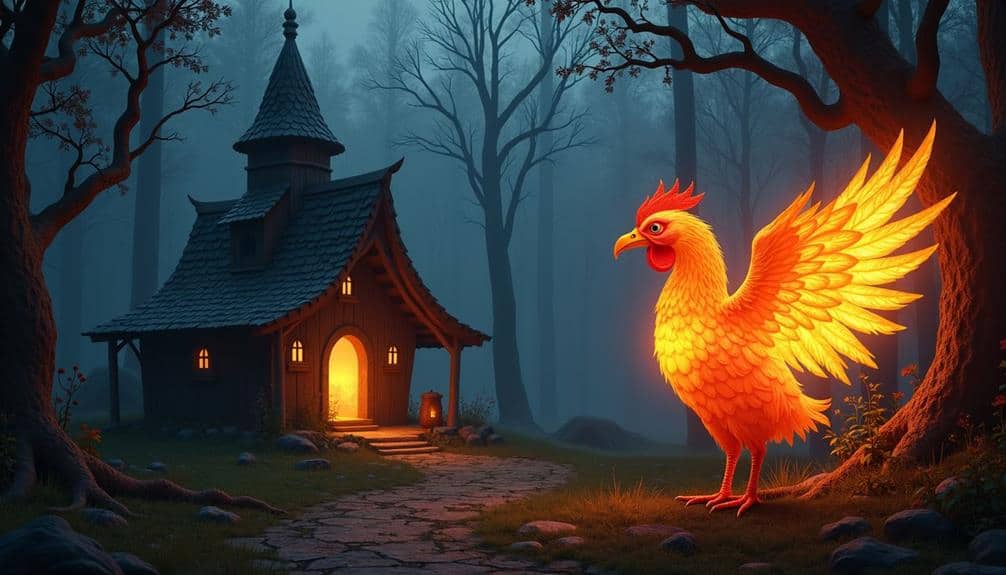
When exploring the symbolism of the Fire Bird, you uncover a rich tapestry of meanings that transcend mere myth. The Fire Bird, a luminescent creature with feathers that glow like flames, serves as a powerful symbol in Russian folklore. Its mythical symbolism encompasses themes of transformation, renewal, and enlightenment.
You see the Fire Bird often depicted as a harbinger of change, much like the phoenix in other cultures, signifying the cyclical nature of life and rebirth. In tales, the Fire Bird’s appearance usually signals a quest for knowledge or self-discovery. Its radiant feathers light the way, metaphorically guiding characters through the darkness of ignorance toward wisdom. This symbolism underscores the idea that true enlightenment often requires a journey fraught with challenges and peril.
Moreover, the Fire Bird represents unattainable beauty and the divine, connecting the earthly realm with the mystical. Its ethereal presence acts as a bridge, inviting you to consider the interplay between the mundane and the extraordinary.
The Fire Bird thus embodies the human aspiration to transcend ordinary existence, encouraging you to seek higher truths and deeper understanding within the rich fabric of Russian folklore.
Cultural Impact and Legacy
The cultural impact and legacy of Baba Yaga and the Fire Bird in Russian folklore can’t be overstated. These figures have transcended their mythological origins to become enduring symbols within Russian culture. You can see this through various cultural interpretations that have seeped into literature, art, and even contemporary media.
Baba Yaga, often depicted as a witch-like figure, serves as a complex archetype representing both fear and wisdom. The Fire Bird, with its radiant feathers and mystical powers, epitomizes the quest for enlightenment and transformation.
In modern adaptations, these characters continue to captivate audiences. You might find Baba Yaga appearing in films, graphic novels, and video games, where she often embodies the enigmatic and morally ambiguous guide.
The Fire Bird, on the other hand, frequently appears in ballet, particularly in Igor Stravinsky’s renowned composition, which has kept the legend alive in the Western world.
These modern interpretations not only preserve the essence of these folklore icons but also allow them to evolve, ensuring their relevance in contemporary culture. By examining these adaptations, you gain a deeper appreciation for how folklore can adapt and thrive across different eras and mediums.
Lessons From Russian Folklore
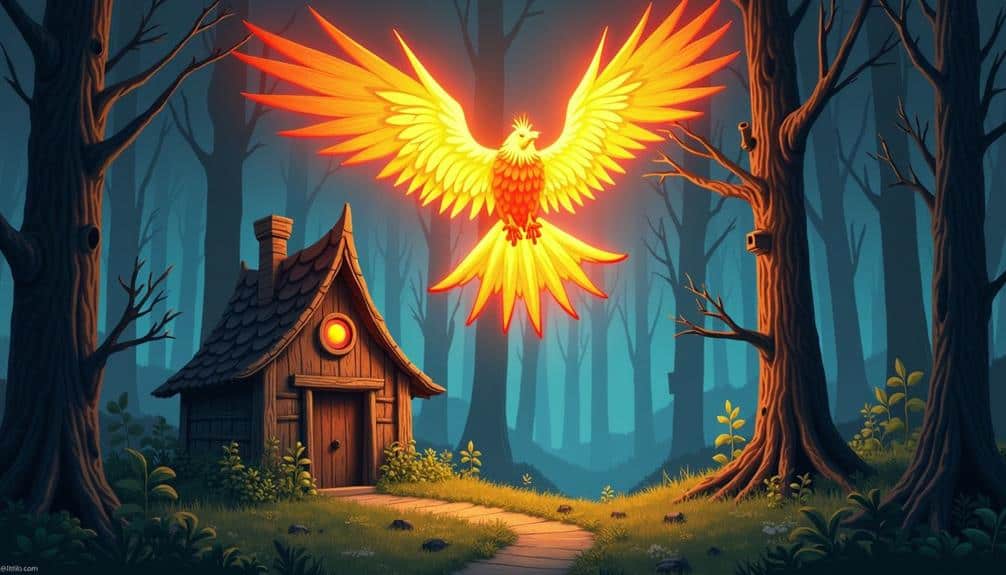
Russian folklore holds a treasure trove of lessons that still resonate in today’s world. By examining tales of Baba Yaga and the Fire Bird, you can uncover profound moral lessons and cultural values.
Baba Yaga, often portrayed as a fearsome witch, teaches the importance of cunning and resourcefulness. Her stories caution against naivety, urging you to be vigilant and discerning in your interactions.
The Fire Bird, on the other hand, symbolizes the pursuit of elusive and often transformative goals. Its tales emphasize perseverance and courage, illustrating that true rewards come to those who dare to seek them despite the odds. These narratives encourage you to aspire for greatness while understanding the sacrifices involved.
Moreover, these stories reflect deep-seated cultural values. They highlight the significance of community, respect for elders, and the balance between nature and humanity.
Through these tales, you learn about the emphasis on wisdom, bravery, and ethical conduct prevalent in Russian culture.




